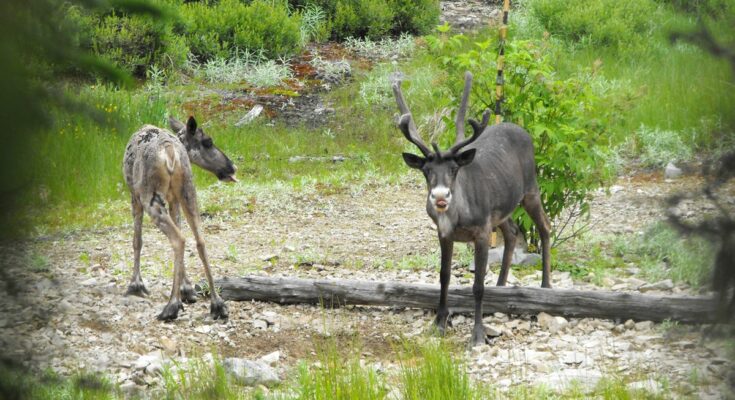This post was originally published on this site
This article from LakeSuperiorCaribou.ca is about the conservation and restoration of the Lake Superior caribou. These caribou are one of several isolated pockets of woodland caribou along the southern edge of their range in Canada that are in immediate danger of being lost. (photo credit: by Brian Brian Mclaren)
The Lake Superior Caribou
Deep History – Woodland caribou spent the last glaciation in the Appalachian Mountains of the eastern United States. As the ice receded, the caribou spread through the forest all along the south edge of the ice. Caribou returned to the Lake Superior area about the same time people arrived. So for about the next 10,000
years caribou provided for and co-existed with the people in this area.
European Settlement – Things began to change about 200 years ago with European settlement. More caribou were shot to feed an increasing population. Caribou habitat was also lost to agriculture, settlements, railroads, roads, pipelines, electrical transmission corridors, and mines. The largest habitat loss was from logging which focused on old conifer forests, often with tree and ground lichens that are the classic winter food of caribou. These old conifer forests were replaced by young forests with a higher component of deciduous shrubs favoured by moose. The increase in moose in these regenerating forests resulted in an increase in wolves. The smaller and sparser caribou were simply unable to withstand this increase in predation – and they steadily declined. By 1980 caribou were gone from the south, west, and east shores of Lake Superior and almost all the off shore islands. There were only scattered caribou on the mainland along the northeast part of the lake, and they were isolated from the main caribou range to the north. Of the islands in Lake Superior, which all had caribou at one time, they remained only on the Slate Islands south of Terrace Bay.
First Restorations – In the early 1900s, 6 caribou were moved from Newfoundland to Caribou Island to restore the population there. In the 1980s, caribou from the Slate Islands were moved to Michipicoten Island and to the off-shore islands and mainland of Lake Superior Provincial Park on the east side of the lake. These populations persisted from 10 to about 40 years. They could have persisted longer but additional efforts were not made to supplement them or protect them.
Near Extirpation – In the winter of 2014 wolves found their way on the ice
Continue to read this article in Lake Superior Magazine.

